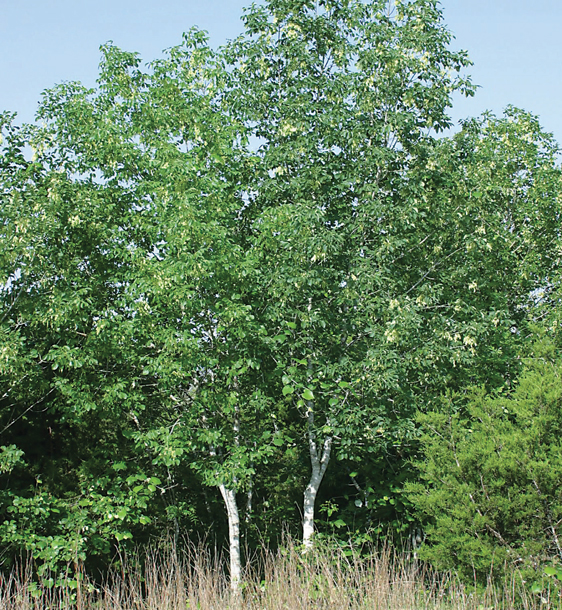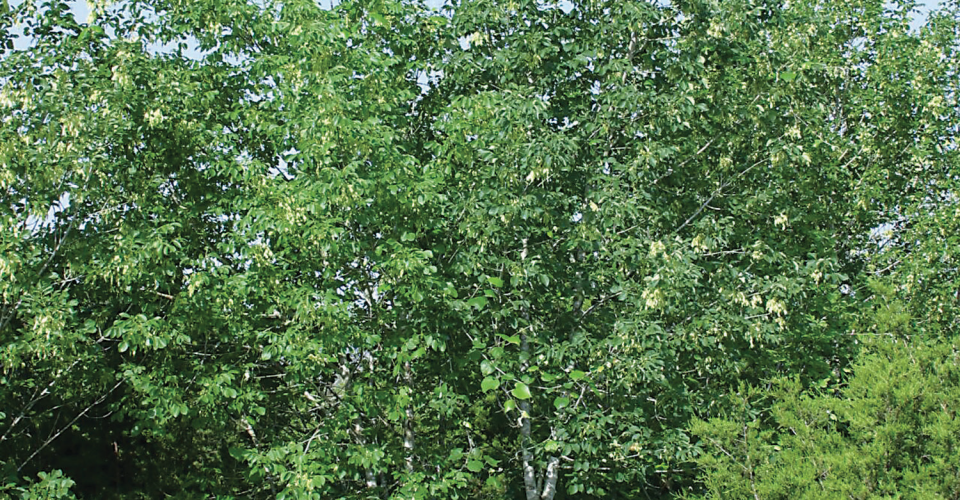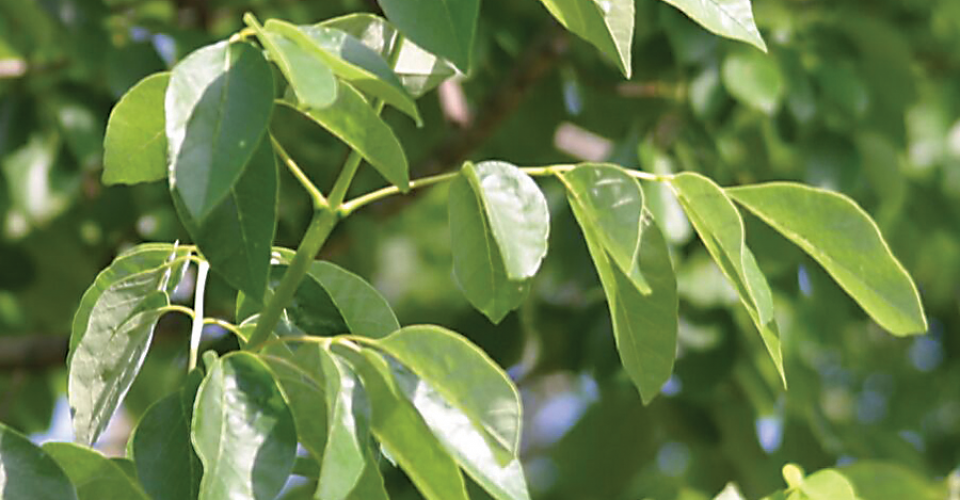Texas Ash (Fraxinus texensis)
Texas Ash is a tree found from central Oklahoma, throughout Central Texas and to the Hill Country. It is one of 65 species that make up the Ash family and is thought to be close kin to the White Ash.
- Can attain a height of 50 feet in good soil but usually grows to less than 30 feet in rocky canyons, slopes and bluffs.
- Is a deciduous tree with light brown to gray bark with irregular fissures that resemble broken plates or thin scales.
- Has pinnately compound leaves [a row of leaflets formed on either side of an extension] that are usually 5 to 8 inches long with 5 smooth leaflets.
- Produces one-inch long, winged seeds and very small purple flower clusters in March.
Texas Ash seeds provide a great food source for many small mammals and birds. The tree’s small seedlings are utilized by white-tail deer and rabbits. It is also a host plant for the tiger swallowtail butterfly.
Texas Ash and several other ash species are utilized as ornamental trees. Texas Ash has a very light brown wood that has been used historically for baseball bats, flooring, furniture and a host of wood products.
Texas Ash rarely becomes a problem in landscapes and is generally thought to be an asset to the property.
Editor’s note: Kent Ferguson, retired rangeland management specialist from USDA Natural Resources Conservation Service (NRCS), is providing us with plant identification photo stories to help ranchers identify those forbs, forages and species growing in the pastures. Additional photos provided by USDA NRCS.
Texas Ash is excerpted from the March 2018 issue of The Cattleman magazine.



